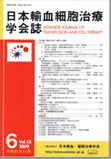Volume 53, Issue 1
Displaying 1-7 of 7 articles from this issue
- |<
- <
- 1
- >
- >|
Originals
-
2007Volume 53Issue 1 Pages 17-23
Published: February 26, 2007
Released on J-STAGE: October 31, 2008
Download PDF (451K) -
2007Volume 53Issue 1 Pages 24-27
Published: February 26, 2007
Released on J-STAGE: October 31, 2008
Download PDF (292K) -
2007Volume 53Issue 1 Pages 28-34
Published: February 26, 2007
Released on J-STAGE: October 31, 2008
Download PDF (682K) -
2007Volume 53Issue 1 Pages 35-42
Published: February 26, 2007
Released on J-STAGE: October 31, 2008
Download PDF (612K)
Report
-
2007Volume 53Issue 1 Pages 43-46
Published: February 26, 2007
Released on J-STAGE: October 31, 2008
Download PDF (409K)
Secondary Publication
-
2007Volume 53Issue 1 Pages 47-55
Published: February 26, 2007
Released on J-STAGE: October 31, 2008
Download PDF (994K)
Letter to the Editor
-
2007Volume 53Issue 1 Pages 56
Published: February 26, 2007
Released on J-STAGE: October 31, 2008
Download PDF (169K)
- |<
- <
- 1
- >
- >|
